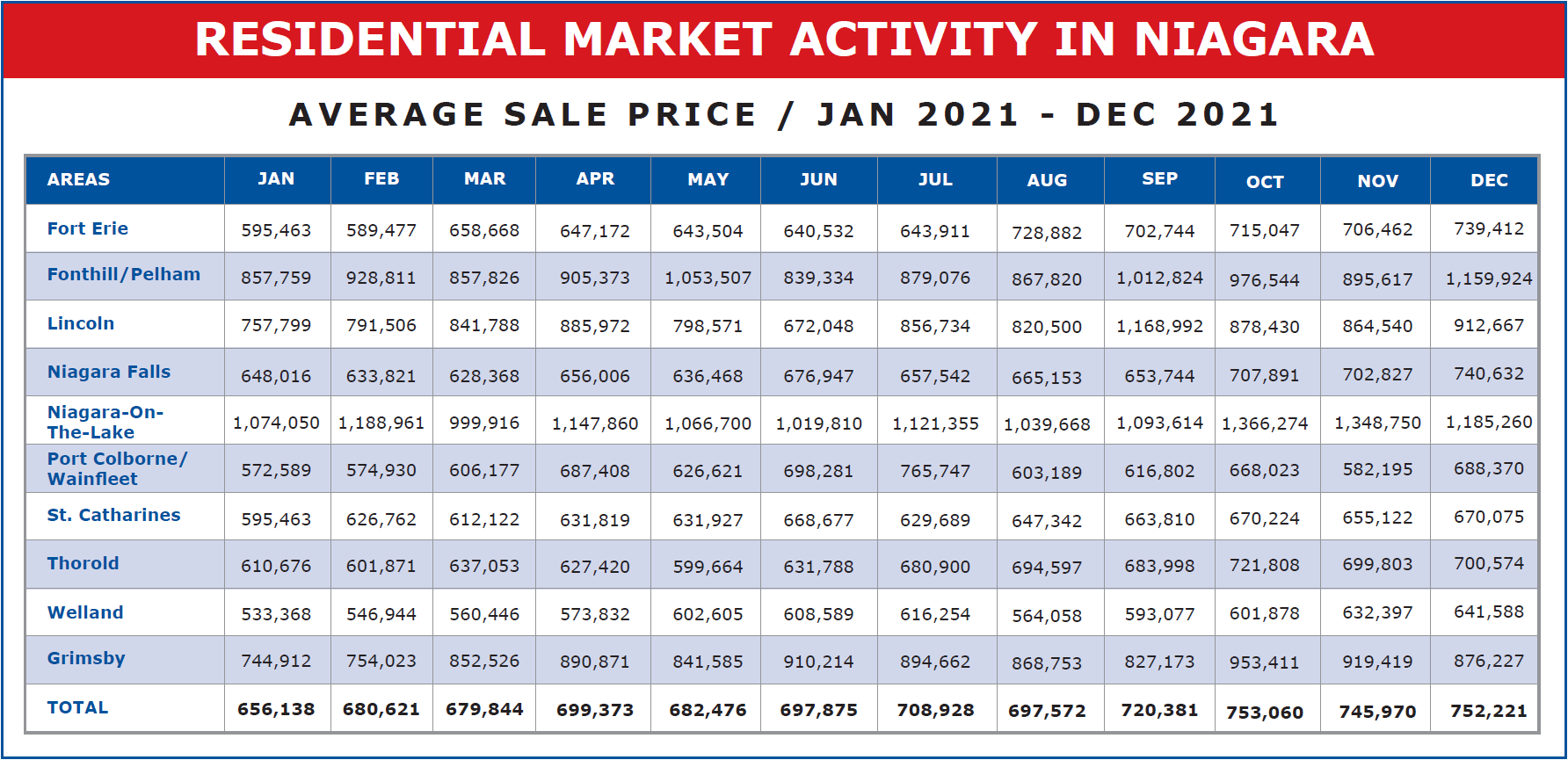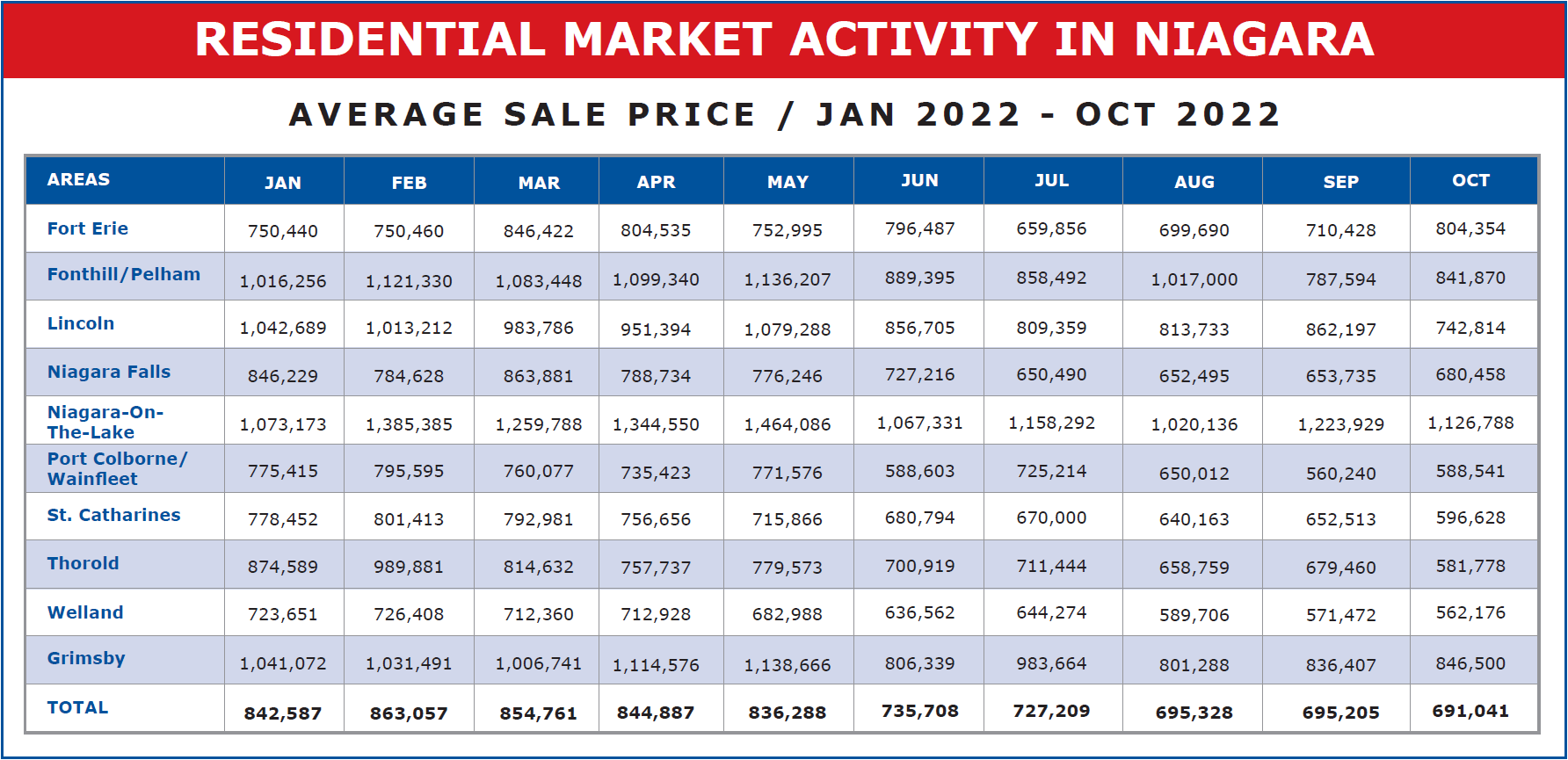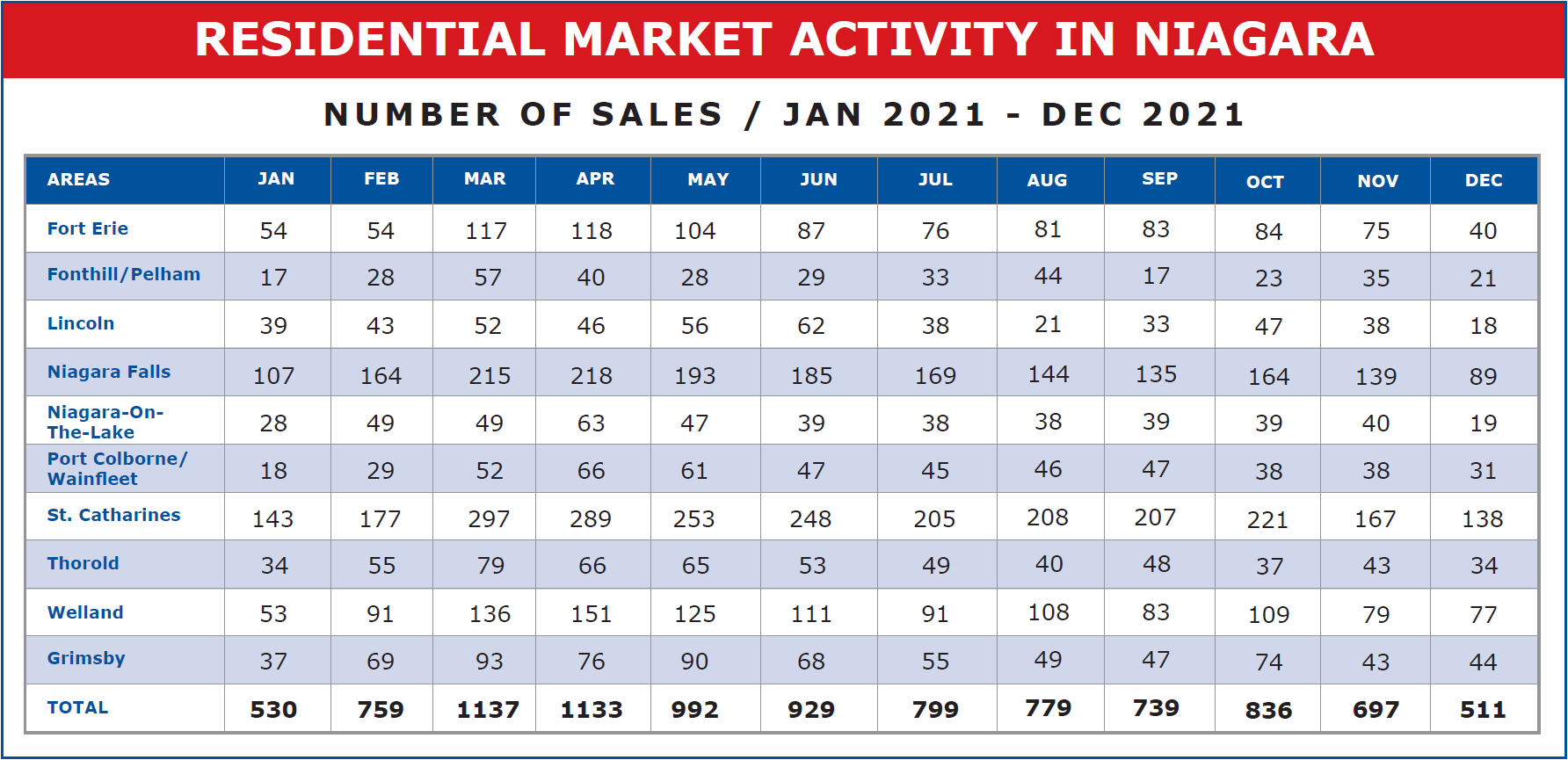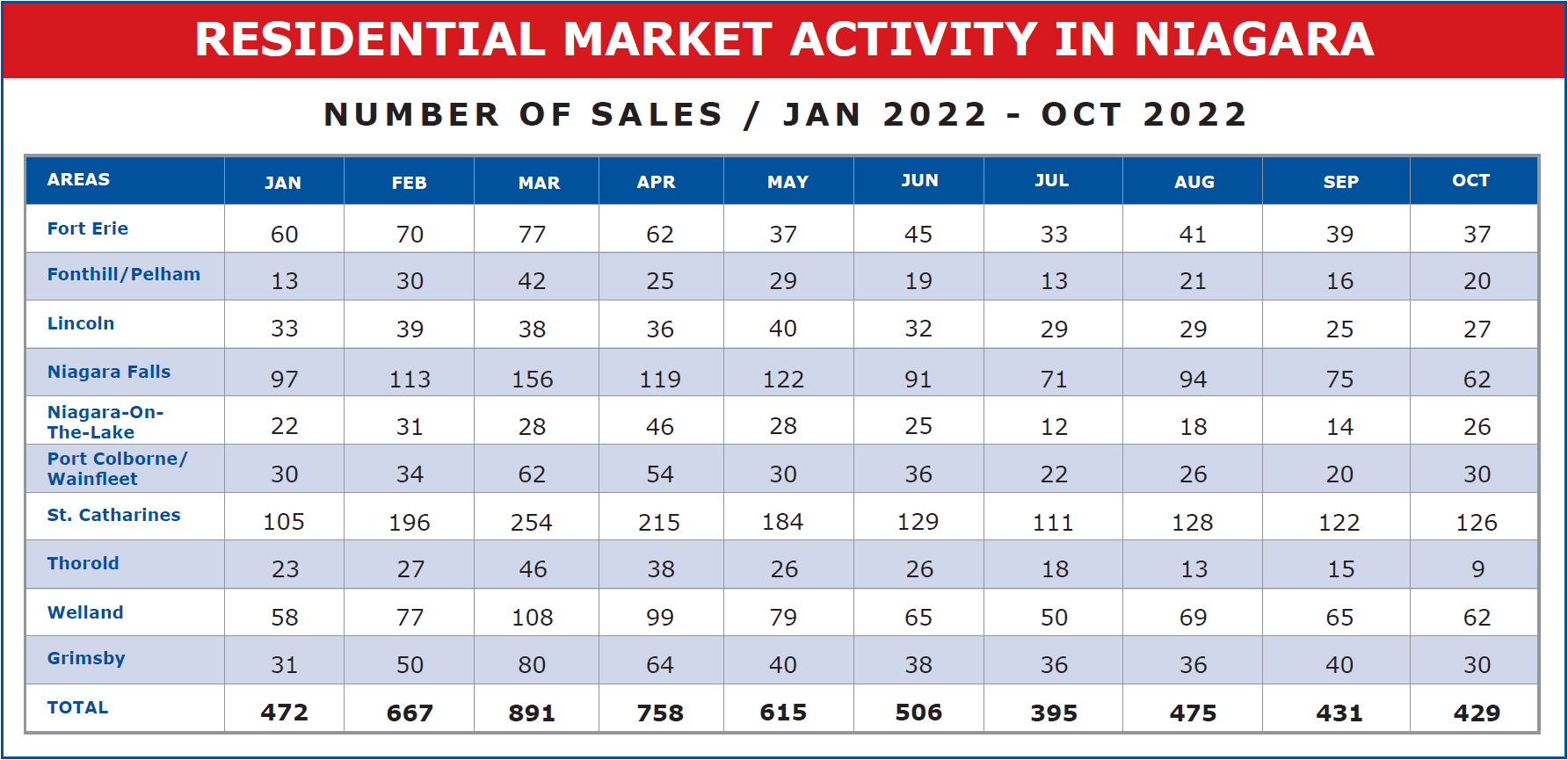November 15th 2022
Last month we took a look at the fact that both here in Niagara and around the globe, economies are in turmoil. Inflation is running at a pace we haven’t seen in almost 40 years, and as a result, governments are scrambling to control it by raising interest rates. That situation hasn’t changed. In fact, even in the face of a possible recession next quarter, the Governor of the Bank of Canada has vowed to stay the course of interest rate hikes in order to combat inflation. We’ll see. So far that tactic hasn’t had much of an effect on run-away inflation, but it has definitely impacted the housing market.
But while sales volumes and average prices are certainly not what they were during the Covid boom, they are showing signs of stability.
The figures are in for October, and as we saw last month, there is finally a certain amount of consistency from one month to the next.
First, let’s look at pricing.


*Sales data provided by the Niagara Association of Realtors and the Hamilton-Burlington Realtors Association as submitted through Brokerage Members inputted MLS sales.
You’ll see that the average residential sale price across the region came in at $691,041. That’s down just $4,164 from September or 0.6%. And when you look at the past three months, you see a pretty consistent picture, August $695,328, September $695,205, and October $691,041. I know a lot of people are still feeling that prices are in free fall, but the stats don’t bear that out.
The one thing that is concerning, however, is the inconsistencies from municipality to municipality. St. Catharines for example, the largest municipality in terms of unit sales, should provide the most accurate and reliable statistics. Here the price came in at $596,628, down $55,885 or 8.6% from the previous month. Niagara-on-the-Lake, one of the priciest spots in all of Niagara, saw the average price drop by $97,141 or 7.9%. At the same time, Fort Erie registered a price gain of $93,926 or 13.2% and Niagara Falls went from $653,735 in September to $680,658 in October. An increase of $26,923 or 4.1%.
So while overall the region showed price consistency, there are some sizeable price swings being registered month to month when you go from one municipality to another. What does that mean? It’s hard to say. Is this an indication of value swings or changes in buying practices? Regardless, it lets us know that there is still a lot of uncertainty.
Now let’s take a minute and look at sales volumes.


A total of 429 residential sales were registered in October. That’s almost exactly the number of sales we saw come in in September. And while it is down from August, it is up from July.
Of course, looking at the bigger picture, we see those sales numbers begin to trail off in April and declined pretty rapidly throughout the second quarter. And while October’s numbers are consistent with those of the previous month, last year's sales spiked by 97 units from September to October and compared to the 836 units sold in October 2021, we are down year over year by 48.7%. That means volumes are about half what they were. A lot of that can be attributed to the departure of speculators from the marketplace. But at the same time, it is reflective of a number of people who are just holding off on making a move until they are sure things, especially prices, have stabilized.
Uncertain times continue. But from what I see, we are moving into a much more stable climate in real estate. December of course is a slow time as we progress into the Christmas season. The first quarter of 2023 will be very interesting to watch.